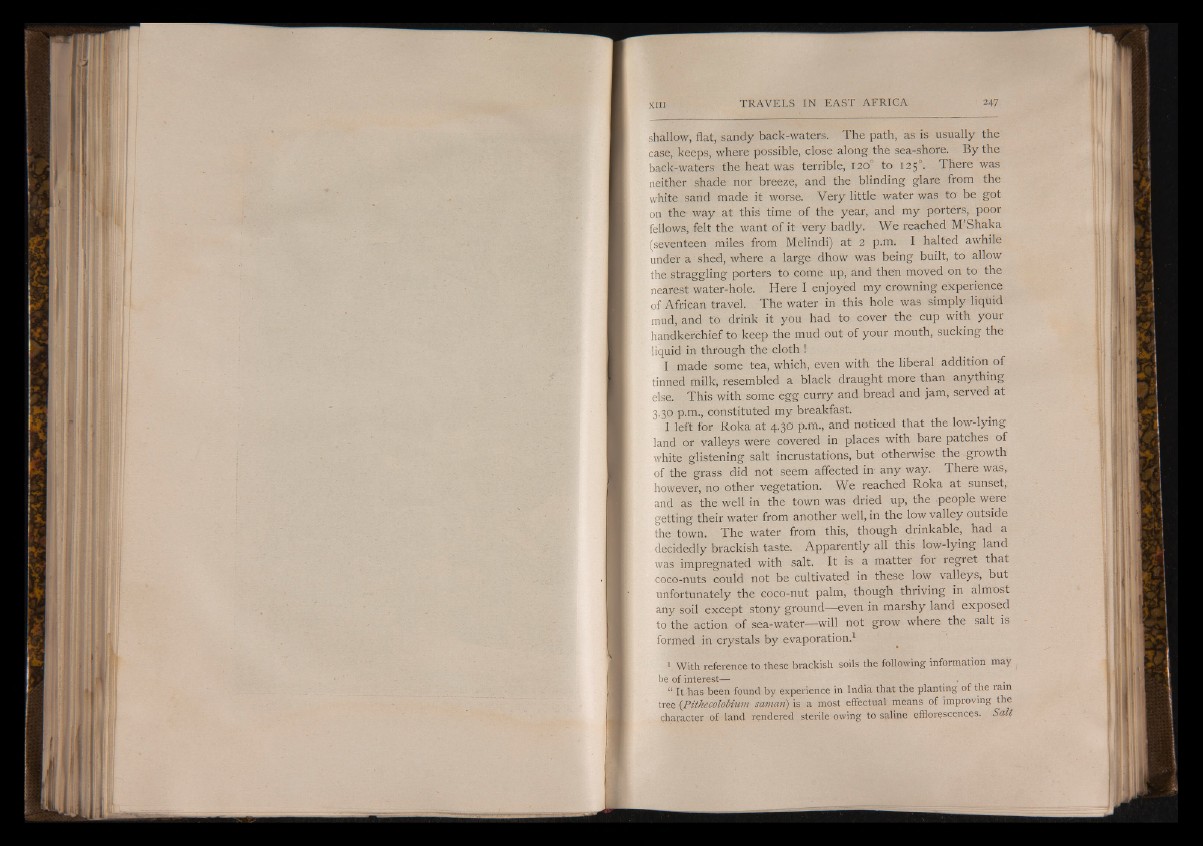
shallow, flat, sandy back-waters. The path, as is usually the
case, keeps, where possible, close along the sea-shore. By the
back-waters the heat was terrible, 120° to 125°. There was
neither shade nor breeze, and the blinding glare from the
white sand made it worse. Very little water was to be got
on the way at this time of the year, and my porters, poor
fellows, felt the want of it very badly. We reached M’Shaka
(seventeen miles from Melindi) at 2 p.m. I halted awhile
under a shed, where a large dhow was being built, to allow
the straggling porters to come up, and then moved on to the
nearest water-hole. Here I enjoyed my crowning experience
of African travel. The water in this hole was simply liquid
mud, and to drink it you had to cover the cup with your
handkerchief to keep the mud out of your mouth, sucking the
liquid in through the cloth !
I made some tea, which, even with the liberal addition of
tinned milk, resembled a black draught more than anything
else. This with some egg curry and bread and jam, served at
3.30 p.m., constituted my breakfast.
I left for Roka at 4.30 p.m., and noticed that the low-lying
land or valleys were covered in places with bare patches of
white glistening salt incrustations, but otherwise the growth
of the grass did not seem affected in any way. There was,
however, no other vegetation. We reached Roka at sunset,
and as the well in the town was dried up, the people were
getting their water from another well, in the low valley outside
the town. The water from this, though drinkable, had a
decidedly brackish taste. Apparently all this low-lying land
was impregnated with salt. It is a matter for regret that
coco-nuts could not be cultivated in these low valleys, but
unfortunately the coco-nut palm, though thriving in almost
any soil except stony ground— even in marshy land exposed
to the action of sea-water— will not grow where the salt is
formed in crystals by evaporation.1
1 With reference to these brackish soils the following information may
be of interest—
“ It has been found by experience in India that the planting of the ram
tree (Pithecolobium samari) is a most effectual means of improving the
character of land rendered sterile owing to saline efflorescences. Salt